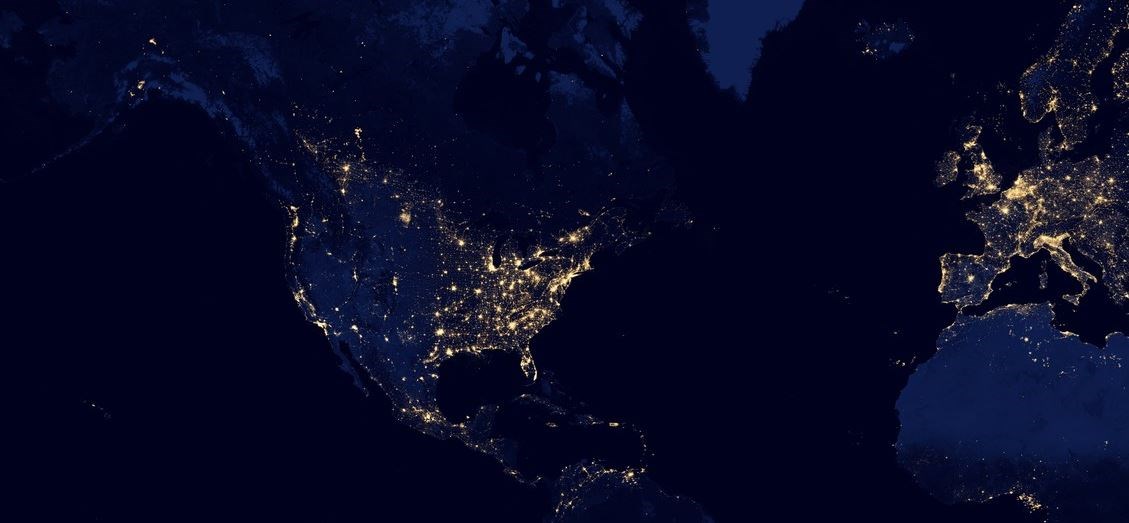|
Since time immemorial humans have found a connection with the night sky. The dark night sky has inspired philosophy and science, and brought humanity closer to the universe around us. Today, however, people are starting to lose that connection due to the influence of light pollution. What is Light Pollution?Light pollution is defined as excessive, misdirected, or obtrusive artificial light. The majority of all light pollution comes from misused or unneeded outdoor lighting fixtures. These outdoor light fixtures can produce several different types of light pollution, as defined by the International Dark-Sky Association (IDA).
In addition to light pollution, misused or unneeded outdoor lighting fixtures can contribute to energy waste, resulting in roughly 60% of the energy used to be wasted. 
NASA Blue Marble Navigator Effects of Light Pollution on WildlifeMany species rely on the natural light from the moon and stars for their survival. Birds who migrate or hunt for food at night, uses the natural moonlight and starlight for navigation. Artificial light created by humans can cause them to be misguided on their natural migration routes leading them towards dangerous urban areas.For other species, the changing light patterns during the twilight and evening hours after the sun sets, signal them to start their nighttime ritual. For frogs and toads, the act of croaking at nighttime is an important part of their breeding ritual. Artificial light can disrupt this nocturnal activity and impact reproduction rates. Artificial light sources often attract insects to them, disrupting the natural feeding patterns of many species of bats. In some cases, newer LED lights will limit the number of insects gathering around them and can cause insect-eating bats to become less active in that area. In many cases, newly introduced artificial light will cause bat species to leave the area in search of a darker habitat. 
NPS Photo How You Can HelpWhile the effects of light pollution can be widespread, the cause is reversable. The IDA has many tips on how you can help. Through taking simple steps you can help limit light pollution in your own neighborhood.
Starting in 2016, Mammoth Cave started taking steps to remove unneeded outdoor lights and retrofit the remaining lights to become night sky friendly lights. The benefit of these changes are immediate and can be seen in the before and after photos of the campground kiosk. International Dark Sky ParkIn 2021, Mammoth Cave National Park was recognized as an International Dark Sky Park. Learn more about this new dark sky park certification and what it means to for protecting night skies. Stargazing in the ParkA journey to the park can be a great opportunity to gaze upon the night sky. Learn more about stargazing in the park and find tips to make your experience enjoyable. Junior Ranger Night ExplorerExplore the starry side of your national parks and become a Junior Ranger Night Explorer. |
Last updated: November 3, 2021
